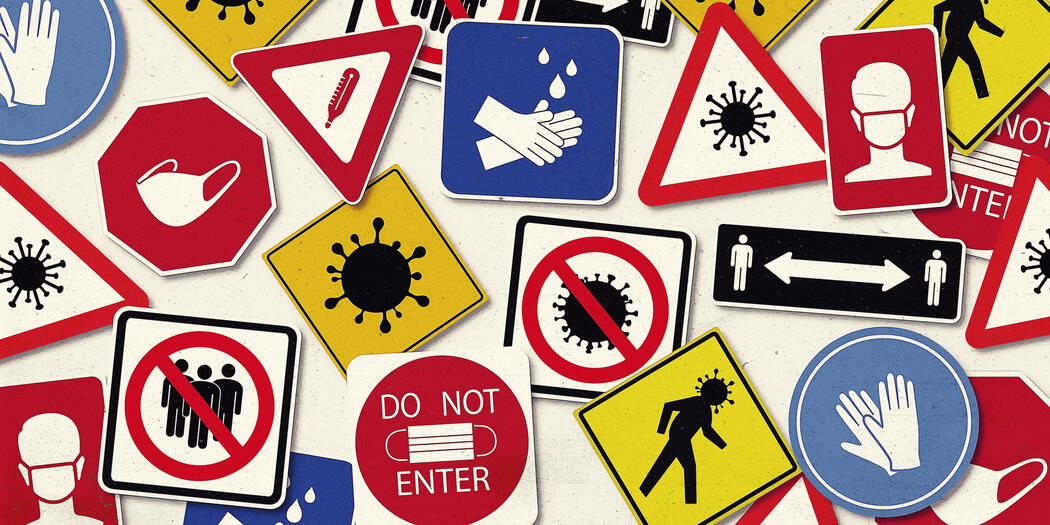IWER
Opinion
What Will It Take to Improve Retail Jobs
By
Credit: Rob Dobi
The COVID-19 crisis has had a major impact on the U.S. retail industry and its workers—but that impact hasn’t been uniform. On the one hand, department stores and apparel and specialty retailers were shuttered for weeks. A number of chains have fallen into bankruptcy, and others teeter on the edge. Some store locations have been permanently closed, thousands of workers have been furloughed or laid off, and by December 2020, the retail sector as a whole employed about 410,900 fewer people than a year earlier—an employment decline of about 2.6%.
However, workers in grocery stores, big-box general merchandise (including food), drugstores, and other purveyors of basic items had a different experience. They have been deemed essential, and, at least early on, they were celebrated as heroes deserving of temporarily higher hazard pay and consumer gratitude—though not consistently given adequate personal protective equipment (PPE) or health and safety guidelines.
These latter, “essential” retail workers experienced temporarily higher hourly wages and, often, increased hours. However, in the months since March, “hero pay” has been cancelled by many large chains and contagion risk continues to be an issue raised by unions and other worker representation organizations. With the second wave of the pandemic underway, the large chains such as Walmart have instituted time-limited bonuses (several lump-sum cash bonuses but no hazard pay at that retailer), but few have institutionalized widespread pay raises for their lowest-paid workers. Among those that did raise hourly workers’ pay widely, Target pushed up implementation of already announced increases while Home Depot ended up transitioning from temporary COVID-related hazard pay to a permanent pay increase for its frontline workers.
Meanwhile, to address the pandemic’s challenge, many large retailers have rapidly mobilized digital technologies to operationalize click-and-collect options that rely on store workers to fulfill orders made online. Store-based jobs are changing. But will there be lasting job quality improvement? Our research suggests that most retailers have not concluded that good jobs are good for business. The momentary spotlight on essential workers shows little sign of changing that pattern in the long run. Our conclusion: only regulatory pressure will make the difference.
Challenges of Low-Wage Retail Work
Retail comprises 13% of total U.S. private employment (15 million workers at the end of 2020). The industry exemplifies the central problems of low-wage work: most frontline retail jobs offer low wages, few benefits, little formal training, and often rationed work hours. Many retailers have adjusted to discounters’ cost-cutting competition by treating labor as the primary cost adjustment variable. The industry is a leader in successfully resisting regulation and unionization (union membership has slipped from 9% to 4% over the last four decades). And private equity’s recent inroads in the sector have intensified these trends as private equity investors seek to wring more profit out of retail companies and in many cases saddle them with debt.
In the research for our chapter on retail in the book Creating Good Jobs: An Industry-Based Strategy (MIT Press, 2020) we found some grocery, warehouse store, and consumer electronics chains that did have better job quality. Yet widespread diffusion of these better employment practices has not occurred, as witnessed by the steady decline in average retail job quality over four decades. As we argue in our chapter in Creating Good Jobs, intensifying competitive conditions limit such diffusion. Arguments that business benefits from better worker treatment, directed at retailers since the 1990s, have consequently had little industrywide impact. In fact, the effectiveness of “efficiency wages,”—economists’ term for wages set above the market level to elicit greater worker effort—gets diluted to the extent that more employers adopt them, and thus they are an insufficient incentive for the bulk of retailers to raise wages.
Technological Change and COVID-19
Two big shocks, rapid technological change and COVID-19, have recently rocked retail. On the tech front, the e-commerce boom is most obvious, but a less visible—and quite ominous—shift is the spread of worker surveillance. Stores are loading up with cameras, backed by “computer vision” artificial intelligence systems that can interpret camera images, and other sensors to track merchandise, consumers, but also workers. Walmart’s “missed scan” system has cameras monitoring cash registers in over 1,000 stores ostensibly to reduce customer theft, but there have been complaints that the system isn’t accurate enough and is used to discipline employees unfairly.
Portable devices (app-equipped phones or other handheld devices) and “wearables” (headsets, armbands) are spreading from Amazon warehouses to retail stores, with the potential to track workers’ location and movements. Retailers are staying mum to avoid controversy, but Big Brother may already be at your favorite store. Tech giants like Facebook and Google have taken heat on consumer privacy issues. But in retail and for that matter the rest of the workforce, we need to be paying a lot more attention to worker privacy.
Technologically facilitated speedup is another looming threat. As stores increase curbside pick-up offerings because of COVID-19, fulfilling online orders gets piled on top of other work. Shelf-scanning cameras flag stock outages as soon as they occur, keeping stockers running back and forth to restock.
Another serious challenge is the COVID-driven recession. Before the pandemic, labor shortages due to a recovering economy had been triggering job improvements among leading retailers. Most visible were entry wage increases: Walmart bumped its minimum pay to $10/hr. in 2016, $11 in 2018. The high levels of unemployment triggered by the pandemic shutdowns are likely to lessen wage pressures going forward and undermine employer interest in basic job improvement measures.
Policy Action Needed
In the early days of the pandemic, there were all kind of workplace safety issues at large retail chains in the U.S.—ranging from stores forbidding workers from using PPE, then dragging their feet on providing it, failing to notify workers of COVID cases in the workplace, to failing to back up employees trying to enforce mask policies. Retail work remains risky, but at least many major companies are now providing PPE and informing workers when coworkers test positive. Because they have finally seen the light? Perhaps, but an important part of the reason is the wave of worker protests and walkouts from Instacart to Whole Foods, plus a push from the United Food and Commercial Workers union that represents one in seven grocery workers. The lesson here is clear. It will take pressure to convince the big retail chains to create decent jobs. That means new laws that go well beyond a higher minimum wage, as well as a larger voice for workers and their organizations.
What policy actions will make a difference? Start with the terms of operation of the industry: financial regulations to limit private equity’s extractive practices and limits to store hours to support sustainable scheduling. And key employment policies need strengthening. The list is long: restoring the federal minimum wage at least to its 1968 real value ($10.54) and consider raising it up to $15 as sought by worker movements; supporting fair scheduling approaches such as requiring greater advance notice of schedules; legislating paid time off (sick days, parental leave); benefit parity for part-time and short-term hires; worker privacy protections; ensuring the viability of Affordable Care Act health insurance exchanges and providing crucial subsidies for insurance premiums.
Supply-side policies such as industry-wide skill enhancement systems to help frontline retail workers advance should play a part as well, though they will be insufficient in and of themselves. Industry-wide structures can fund and administer career-long skill enhancement systems for retail workers, such as skill certifications or ongoing standardized training modules delivered through industry-run training programs, community colleges, or other institutions. Many of these will simply not happen, nor be complied with, without greater access to representation and collective bargaining and the continued activism of unions and worker associations.
If we truly value our “essential workers” and other frontline employees, we need to take decisive action to defend labor standards in their workplaces.

